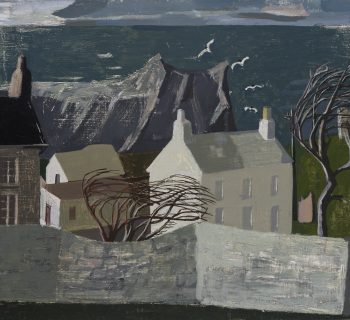WBG in Writing
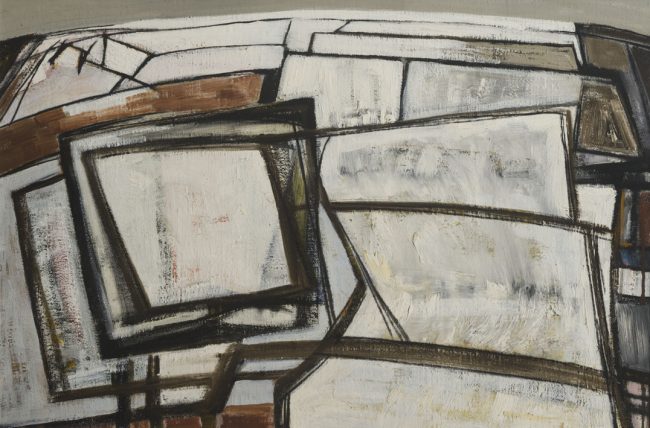
Snow in Wharfedale II 1957 oil on canvas 49.1 x 74.5 cm, Pallant House Gallery
Our former trustee Alice Strang has recently written two articles about the art of Wilhelmina Barns-Graham. The first, A Studio Visit: the Workplaces of Wilhelmina Barns-Graham can be read on our web site, while the second, From Cornwall to Switzerland: The travels of Wilhelmina Barns-Graham, commissioned by Pallant House Gallery for Perspectives, “a series of interviews, films, image galleries and essays, which uncovers the creative lives of the people behind the art on our walls”, is located on their web site.
Of A Studio Visit, Alice has written previously about Studio Interior (Red Stool, Studio) (1945) for Liss Llewellyn Fine Art’s exhibition 50/50; Fifty British Women Artists 1900 – 1950, seen at Worshipful Company of Mercers, London and The Stanley & Audrey Burton Gallery, University of Leeds in 2019. About this painting she said:
“Studio Interior (Red Stool, Studio) depicts Barns-Graham’s first studio in St Ives, no. 3 Porthmeor Studios. She rented it from 1940 until 1946 for 7s 6d per week. It was furnished and had a tall, north-facing window on to Porthmeor Beach. It was situated in the heart of the artists’ community, near the St Ives Society of Artists, St Ives School of Painting and the studios of Alfred Wallis and Leonard Fuller, amongst others.
The painting is a celebration of Barns-Graham’s imposing studio, which symbolised the beginning of a new chapter in her career. The three blank canvases, one on the wall, one propped up beneath the window and one on the easel, accompanied by the prepared palette on the stool, create a sense of creative potential and anticipation; the tools of her trade are confidently depicted in a complex yet carefully orchestrated composition, in which yellow and red play a constructive role. The focus is on the work which Barns-Graham is to make, with which she was to make her name as a pioneer of British abstraction.”
The new article looks at four paintings, including Studio Interior (Red Stool) that Barns-Graham made of her studios, from c1935 to the 1990s. Worth noting in this context also is The Blue Studio (1947-48) which the Wilhelmina Barns-Graham Trust donated to the Fleming Wyfold foundation (aka The Fleming Collection) as part of the artist’s centenary celebrations.
The second article examines Barns-Graham’s early travels, to Switzerland, Italy and Yorkshire, between 1948 and 1958, using drawings and paintings in the Pallant House collection to illustrate the impact these places had on Barns-Graham’s art. This subject is explored more fully in the current touring exhibition Wilhelmina Barns-Graham Inspirational Journeys. (Further information for this show can be found here.)
Look out also for Peyton Skipwith’s perceptive overview of Wilhelmina Barns-Graham – In Focus: Wilhelmina Barns-Graham, the Scottish artist whose work spanned the 20th century – written for Country Life magazine. This is in their July 2020 issue which can be accessed on their web site. It’s wonderful to see WBG the subject of so many articles.
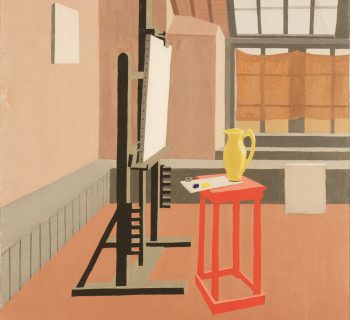
Studio Interior (Red Stool, Studio), 1945, Oil on canvas, 61 x 46 cm, BGT6408
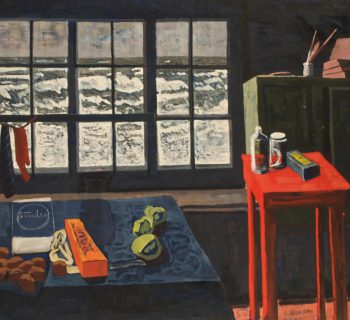
The Blue Studio, 1947-48, oil on canvas, 92 x 122.2 cm, Fleming-Wyfold Art Foundation
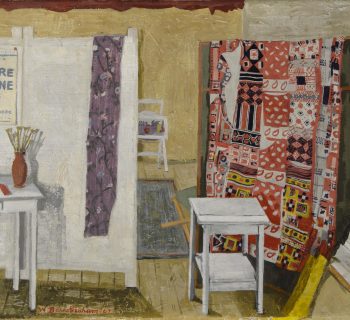
Studio Interior 1947 II, 1947, Oil on canvas, 49.5 x 60.1 cm, BGT1256
